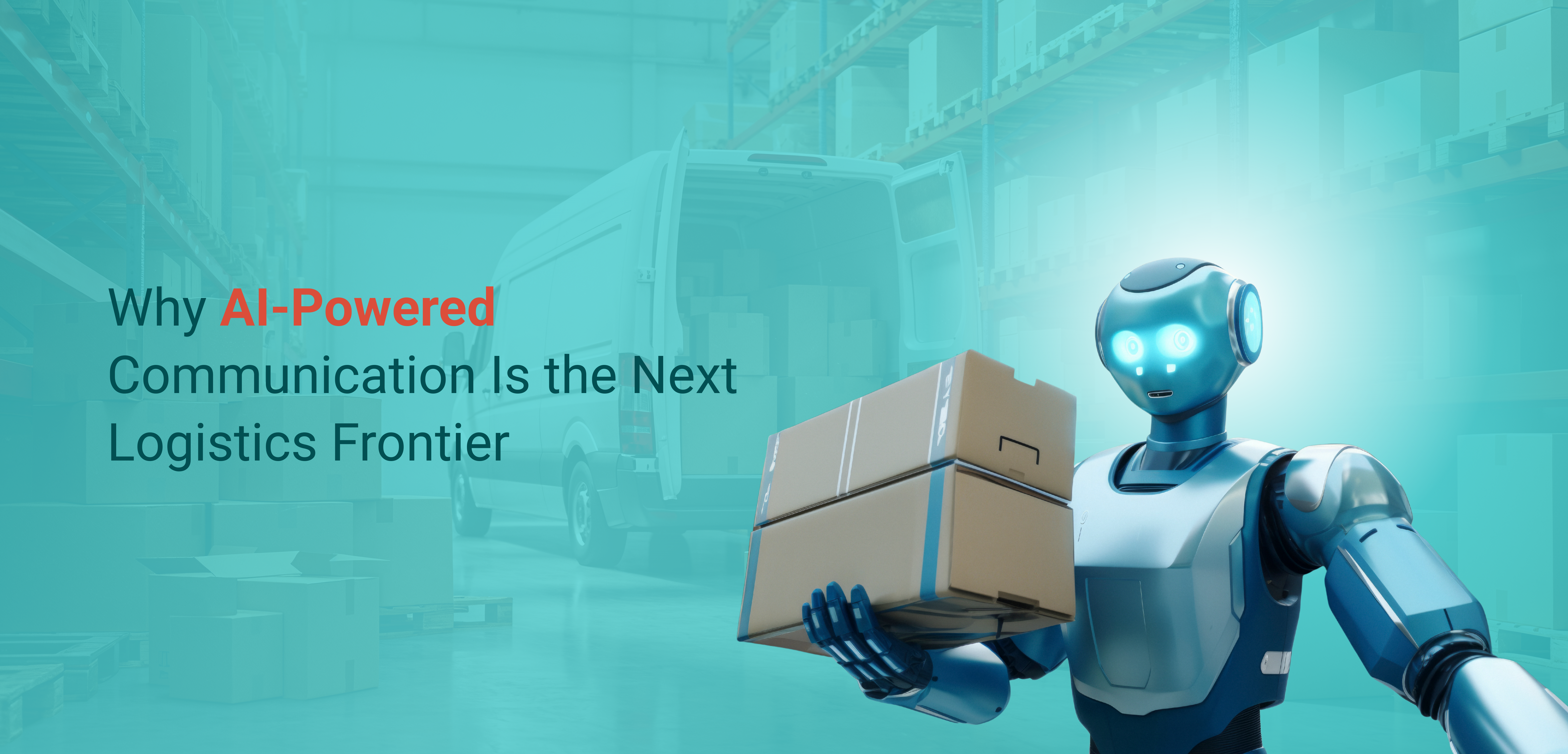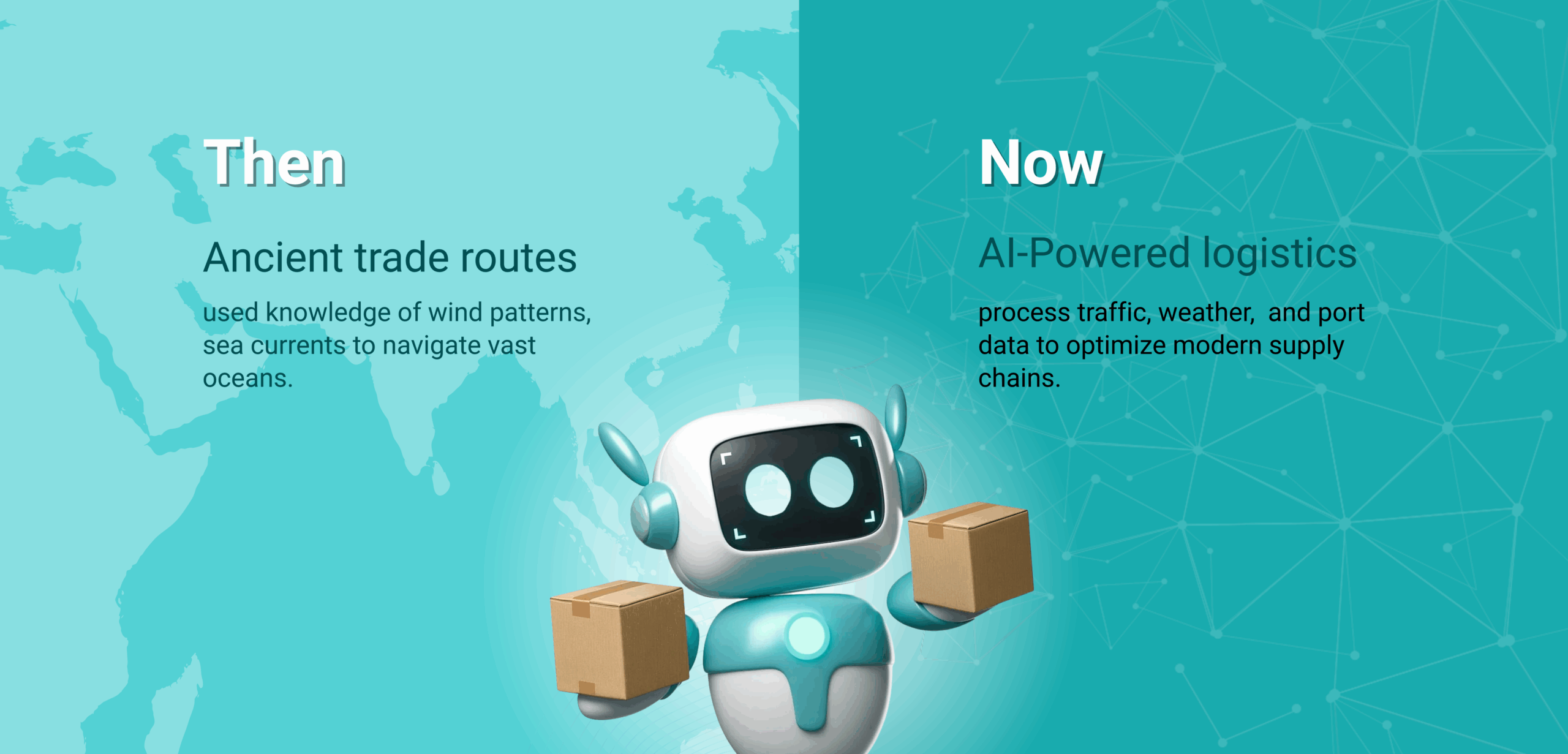
From Ports to People: Why AI-Powered Communication Is the Next Logistics Frontier
In The Terminal, Tom Hanks’s character is trapped in an airport for months, not because of a single failure but because a chain of miscommunications, bureaucracy, and fragmented systems leaves him stranded. The film, while entertaining, exposes a deeper truth: when information doesn’t flow seamlessly, even well-intentioned systems collapse under their own weight.
This is the reality logistics face today. The Gulf Cooperation Council GCC’s logistics sector is on the cusp of unprecedented growth, projected to reach US$81.3 billion in 2025 and nearly US$110 billion by 2030, figures aligned with market forecasts. But growth alone isn’t enough. Behind every shipment is a network of decisions, alerts, and trust; one missing update can disrupt an entire operation.
Henry Ford’s timeless observation still holds: “Coming together is a beginning, staying together is progress, and working together is success.”
In logistics, working together means assuring that information flows without friction, decisions are data-driven, and disruptions are anticipated, not just reacted to.
“When information doesn’t flow seamlessly, even well-intentioned systems collapse under their own weight.”
The Communication Problem in a $100+ Billion Market
Imagine the scale. Every container, every shipment, every driver, and every consignee is a node in a massive, dynamic network. Every handoff, every status check, and every exception alert is a potential point of failure. The human element, while indispensable for strategy and problem-solving, can’t keep pace with this velocity.
Here’s where the system often breaks:
- Vague or Late ETAs: A 2025 DHL shopper data report highlighted rising frustration among consumers, with 52% citing “long delivery times” as a pain point, up from 46% the previous year. Ambiguous or delayed updates compound this frustration, even if deliveries are technically on time.
- Port Dwell and Demurrage Fees: Poor communication about congestion can lead to costly, avoidable penalties. According to Container xChange’s 2023 report, the average two-week demurrage and detention fee is around US$1,219 per container. Without timely information, teams can’t act proactively to minimize these charges.
- Channel Mismatch: The GCC is a digital-first region, with near-universal social and messaging penetration, 100% active social IDs in the UAE, and 99.6% in Saudi Arabia. WhatsApp has become the lingua franca for communication, from drivers to BCOs. Updates buried in emails or portals risk invisibility.
- Manual Handoffs During Disruptions: When a critical event occurs at 2 a.m., a human drafting a notice at 9 a.m. introduces unnecessary delay. This slow response can cascade, compounding disruption and impacting downstream operations.
“In a market exceeding US$100 billion, communication efficiency determines profitability.”
Historically, trade and communication have always been intertwined. In the 19th century, telegraph networks revolutionized shipping by giving port operators real-time access to vessel movements. Today, AI is the modern telegraph, but infinitely faster, smarter and predictive.
The AI Solution: Structured, Proactive and Personalized Communication
Artificial intelligence isn’t about replacing humans; it’s about enabling them to focus on high-value tasks, while AI handles repetitive, time-consuming communication. Here’s how AI is reshaping logistics in the GCC:
- Automated Real-Time Updates: AI-powered platforms can ingest data from IoT sensors, EDI systems and port terminals, triggering instant notifications. When a container is offloaded, the consignee is alerted immediately. If a truck hits traffic, AI recalculates the ETA and sends an update, mitigating frustration before it escalates.
- Multichannel Orchestration: Different stakeholders prefer different channels. AI routes messages intelligently: drivers receive bilingual WhatsApp alerts with live maps, consignees get SMS notifications, and operations managers receive email summaries of exceptions. The right message reaches the right person at the right time.
- Predictive Analytics for Proactive Alerts: Instead of reacting, AI predicts. By analyzing historical patterns and real-time conditions, AI identifies potential delays before they occur. Rather than “Sorry, your shipment is late,” stakeholders receive: “We anticipate a delay due to traffic; here’s our mitigation plan.” This transforms perception and builds trust.
- Bilingual and Smart Templates: Clear, structured and bilingual communication is critical in the multicultural GCC. AI ensures updates consistently include essential data; Bill of Lading numbers, container IDs, timestamps, reducing human error and eliminating ambiguity.
“Success depends on moving information faster, clearer, and smarter than anyone else.”
The push for AI-driven communication is not just operational; it’s strategic. Saudi Arabia’s National Transport & Logistics Strategy, (Vision 2030) explicitly aims to position the Kingdom as a global logistics hub. As physical corridors accelerate, digital corridors, the unseen highways of data and communication, must move faster still.

GCC Logistics: History Vs Hypergrowth
The GCC has long been a crossroads of trade. From the pearling ports of the 19th century to today’s container megahubs, the region’s geography has always been a magnet for commerce. Yet, volume alone is no longer the differentiator. In a market exceeding US$100 billion, communication efficiency determines profitability.
Consider this: in 2010, many GCC ports still relied heavily on faxed documents and manual phone calls for coordination. Fast forward to 2025, and AI is now capable of managing thousands of real-time updates per hour across multiple channels, effortlessly integrating with multimodal networks. The evolution is striking, not just in speed, but in intelligence.
“AI is the modern telegraph; faster, smarter, and predictive.”
Is Your Logistics Communication Built for the Future?
The pace of change is relentless. Supply chains that once measured efficiency in days now measure it in minutes. Companies that cling to reactive, manual processes risk falling behind, while those that take up AI-driven, proactive communication gain a decisive edge.
Here’s the hard truth: in GCC logistics, it’s not enough to move containers quickly. Success depends on moving information faster, clearer and smarter than anyone else. AI provides that capability, automated, predictive, multilingual and channel-optimized.
The result? Reduced demurrage fees, happier consignees, smoother operations and a tangible competitive advantage.
“In logistics, working together means ensuring that information flows without friction, decisions are data-driven, and disruptions are anticipated, not just reacted to.”
Real-Time Logistics Starts Here: Take the Quiz
Answer these quick questions to see how prepared your operations are for the next generation of communication powered by AI.
1. How often are your shipment updates delayed or unclear?
- Rarely – we have structured communication
- Occasionally – depending on the channel or time of day
- Frequently – we react after issues arise
2. Which channels do you use to communicate operational updates?
- WhatsApp, SMS, email, integrated platforms
- Primarily email or phone calls
- Manual calls, paperwork, spreadsheets
3. Do you proactively inform stakeholders of potential delays?
- Yes, before they occur, with alternate plans
- Sometimes, when issues escalate
- No, communication happens too late to prevent issues
4. How often do communication breakdowns cause extra costs (e.g., demurrage, lost customers)?
- Rarely
- Occasionally
- Frequently
5. Do you have structured templates that include essential details (container ID, BL number, timestamps)?
- Yes, standardized across teams and languages
- Partially, depending on staff availability
- No, we rely on manual drafting every time
Scoring Guidelines:
Mostly A’s: You’re ahead of the curve. Your communication is structured and aligned with best practices. AI can help you scale and predict issues before they arise.
Mostly B’s: You’re reactive more than proactive. Your communication works, but it’s vulnerable to delays and inconsistencies. AI-powered automation can make you faster, clearer, and more resilient.
Mostly C’s: Your team is at risk. Manual processes and fragmented communication are costing you time, money, and trust. It’s time to adapt structured, data-driven communication with AI at the core.
Wherever you are in your journey, AI can help you move faster, smarter, and with confidence. Share your top exception types and channels and let’s build communication workflows that reduce delays, avoid unnecessary costs, and keep your operations running smoothly.
Taking the Next Step
The GCC’s logistics landscape is evolving at lightning speed. To excel, businesses must shift from reactive processes to structured, proactive, and AI-driven communication.
Ready to see how AI can transform your logistics communication for UAE to KSA lanes? Share your lane list, channels, and top five exception types. LogixGRID will map them to smart templates, wire WhatsApp/SMS/email updates, and baseline key metrics like WISMO, D&D days, and on-time communication percentage. The future of logistics is not just about moving goods, it’s about moving information with precision.
Ready to Transform?
It s simple: upgrade to LogixPlatform today. Move your logistics billing from manual, siloed, error-prone mess to automated, accurate, HASiL-compliant
workflows across your entire operation.
Let us help you transform your invoicing, so your operations run smoother, your cash flows faster and your compliance is airtight.
FAQ’s
AI ensures real-time, structured, and proactive updates across multiple channels, reducing delays, demurrage fees, and miscommunication. It allows operations teams to focus on high-value problem-solving instead of repetitive messaging.
AI can intelligently route updates to the right person, in their preferred channel and language, ensuring that drivers, consignees, and managers receive clear, timely, and relevant information.
Yes. By analyzing IoT sensor data, port congestion, and traffic patterns, AI can forecast disruptions and alert stakeholders with mitigation options before issues escalate.
No. AI complements human expertise by automating repetitive updates and ensuring accuracy, while people handle strategy, negotiation, and decision-making.
With GCC logistics projected to surpass US$100 billion, efficiency depends on speed and clarity of communication. High smartphone and social messaging penetration in the region makes AI-driven multichannel communication essential for customer trust and profitability.

